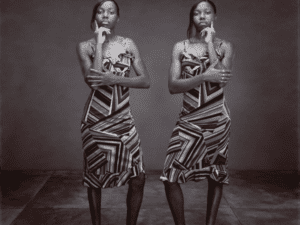The American Civil War (1861-1865) fundamentally altered the trajectory of photography. The conflict saw the medium take on a critical role. It became a crucial way to document war’s harsh realities on the battlefront, whilst also functioning as a means to influence public perception. The visceral nature of images shaped attitudes, opinion and emotions, sparking conversations about the war’s human cost. This is where The High Museum of Art’s latest exhibition, Long Arc: Photography and the American South since 1845, begins. In a show that hosts over 170 works, featuring photographers such as Bruce Davidson, Walker Evans, Doris Derby and Ernest Withers, as well as Dawoud Bey and Ramell Ross, audiences are taken on a journey that examines the complex and critical history of the South. Here, we face timely questions about American culture and character, as well as the possibilities of image making and their impact today.

A Long Arc takes viewers through time, beginning with slavery and the Civil War. It recognises photography’s ability to both participate in propaganda and expose reality. Audiences are confronted with pictures that test the means of fact and fiction, moving from propaganda-driven antebellum pictures to lesser seen images of Black artillery men. Elsewhere, the rise of studio portraiture is focused on. The increased demand for pictures – driven by family members wanting images of their brothers, husbands and sons away at war, was met by the invention of the tintype. The metal image, as well as the ambryotype, an image printed on glass, allowed for the mass production of small photographs. Soldiers would go into itinerant portrait studios and have their portraits made, then going on to send these home. Curator Gregory Harris explains, “It was a way for soldiers to declare their existence, to show their allegiance and affiliation to a particular side in the conflict. Because so many people died in conflict, these pictures became parts of the ritual of mourning and memory following the carnage that swept across the country.”
Further on, the exhibition shows the advent of documentary photography, as advocated by photographers such as Dorothea Lange (b. 1895) and Walker Evans (b. 1903). At the time, the new style presented an unabashed, stripped-down perspective, focusing on events as they were happening. The artists encapsulated the vernacular by capturing everyday spaces such as barber shops, rural markets, run down streets. This visual language is shown to be highly influential – dominating photography for the rest of the 20th century. This emerges in the civil rights movement – coming to the fore in iconic images such as Charles Moore’s Martin Luther King Jr. Arrested, Montgomery, Alabama (1958). Here, King appears in motion, just moments after he has arrived at a courthouse, charged for “loitering,” his hands twisted behind his back. It’s a chilling scene charged with energy and movement, all the more powerful having been captured on camera. In particular, it stands in contrast to images of quieter nature, such as William Christenbery’s (b. 1936) Red Building in a Forest (1983) or Richard Misrach’s Swamp and Pipeline, Geismar, Louisiana, (1998). The two pictures are eerily quiet, depicting the receding landmarks of the South. It imbues the show with questions of legacy, memory and inheritance, asking, how does the past persist into the present?

The final section of the exhibition looks at contemporary image-makers such as RaMell Ross (b. 1982) and José Ibarra Rizo (b. 1992). Rizo depicts the Latino immigrant experience in the American South, an experience he remarks as being “pulled between two cultures.” His tender photographs focus on a community that is ubiquitous yet often underrepresented in popular media. Ross’ iHome (2021), shown at the top of the page, depicts a phone looking at a white antebellum mansion, a once iconic symbol of white supremacy. The artist plays with layering and history. Although we are shown a modern device, the picture itself is taken on a 8×10 large format camera, a piece of equipment that would have been used during the Civil War. The artist chimes into a wider show that asks questions about who gets to write history and to what effect. It’s an exhibition that presents a critical and considered overview of the American South’s tumultuous history, culture and ongoing societal transformations. It pays attention to photographs audiences are both familiar and unfamiliar with, capturing the nuanced, changing realities of living in the region today.
A Long Arc: Photography and the American South since 1845 | September 15 – January 14 2024
1. RaMell Ross (American, born 1982),iHome, 2013, pigmented inkjet print, HighMuseum of Art, Atlanta, purchase with funds from the Marilyn and Donald Keough Family Foundation, 2022.159. © RaMell Ross
2. Richard Misrach (American, born 1949),Swamp and Pipeline, Geismar, Louisiana,1998, printed 2012, pigmented inkjet print, High Museum of Art, Atlanta,commissioned with funds from the H. B. and Doris Massey Charitable Trust, Lucinda W. Bunnen, and High Museum of Art Enhancement Fund for the Picturing the South series, 2012.7. © 1998 Richard Misrach / Courtesy of Fraenkel Gallery, Pace-MacGill Gallery and Marc Selwyn Fine Arts.
3. William Christenberry (American, 1936–2016), Red Building in Forest, Hale County,Alabama, 1983, printed 2001, dye coupler print, High Museum of Art, Atlanta, gift of the artist, 2014.101. © Estate of the artist.





